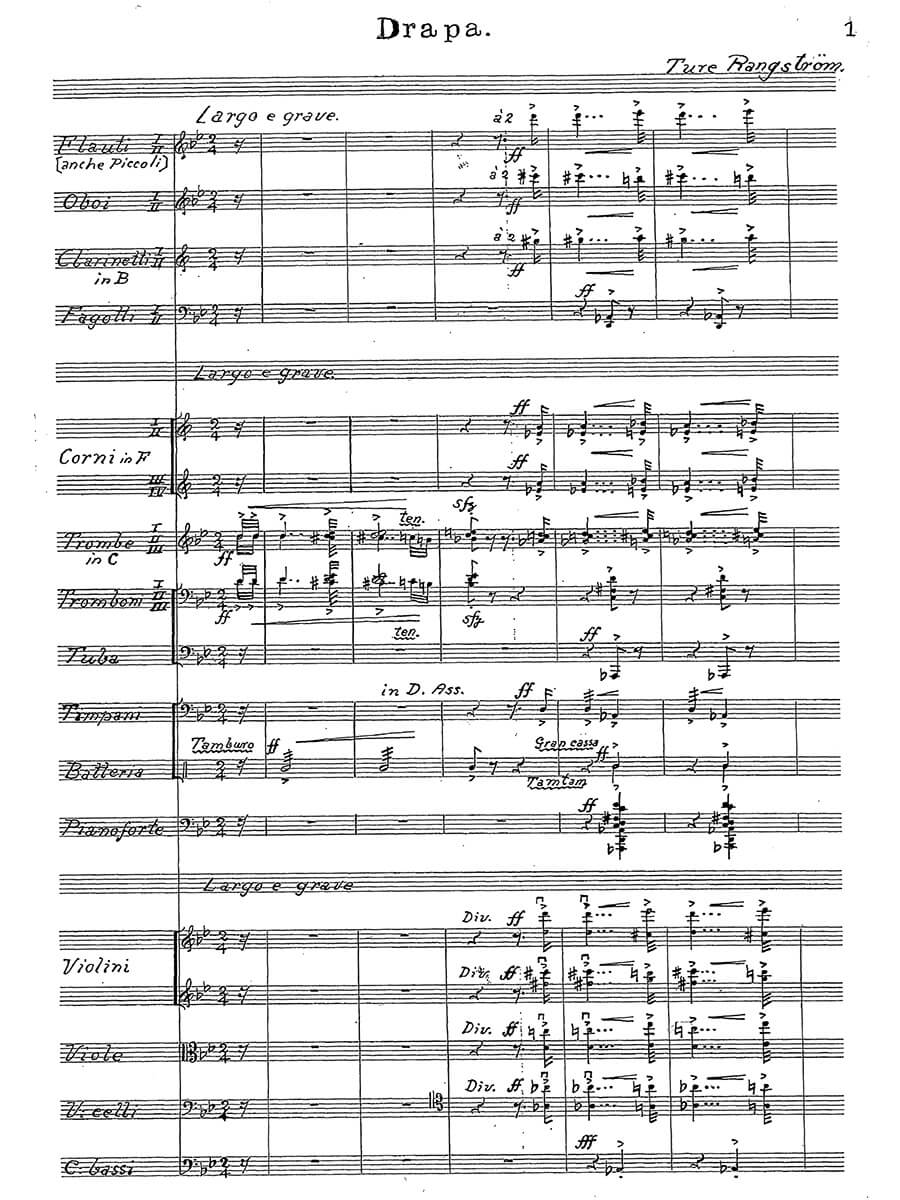Drapa, Sorgemusik för Stor Orkester, “sorrowful” music for grand orchestra
Rangström, Ture
17,00 €
Anders Johan Ture Rangström – Drapa, Sorgemusik för Stor Orkester
(b. Stockholm, 30 November 1884 – d. Stockholm, 11 May 1947)
Preface
The era of the generation of composers around Ture Rangström, Wilhelm Stenhammar, Hugo Alfvén and Kurt Atterberg can be regarded as a kind of Golden Age of Swedish music. Among them, Rangström counts as the greatest song composer with over 250 songs, of which about two dozen are written on his own texts of remarkable quality. In addition, the second of his four symphonies, entitled Mitt land (My Country), is regarded as Sweden’s musical calling card and, comparable to Smetana’s Ma Vlast (My Homeland), is a song of praise for the described landscape – although Rangström does not, like Smetana, provide concrete images in the movement titles, but leaves space for the imagination. In addition to the symphonies, Rangström wrote ten further orchestral works, 13 incidental music for the stage, works for string orchestra, the Ballad for piano and orchestra, and the Partita for violin and orchestra, choral pieces, chamber and solo music. In the present series “Repertoire Explorer” his symphonies no. 2 Mitt Land (SKU 4023), no. 3 Sång under stärnorna (SKU 4180) and no. 4 Invocatio (SKU 4166) have already been released, as well as the Notturno a la maniera di E. T.A. Hoffmann for string quartet (SKU 4111), the Divertimenti for strings (SKU 4129), Dityramb for orchestra (SKU 4199), the symphonic poem Havet sjunger (SKU 4221), Vaux-Hall for orchestra (SKU 4259) and the Partita in B flat minor (SKU 189). In the chamber music series Beyond the Waves, the two pieces for violin and piano Arioso (SKU 5267) and the Improvisata Vårnätterna (SKU 5268) were also published.
Rangström’s music is composed in his unmistakable idiom, with enormous contrasts between the finest lyricism and a rough, romantic urge. Dark moods prevail, saturated with melancholy and breakneck adventurous turns, reminiscent of the lyrics of his idol Strindberg. Concerning harmony he started in the spheres of late romanticism spilling over from Europe, the finale of which he witnessed during his studies in Germany. Later he developed a more dissonant, idiosyncratic and – one might say – ‘weird’ idiom. Rangström, a pioneer of the national upswing, transcended the ideas of national romanticism with the intention of developing an all-Nordic style. …
Read full preface > HERE
| Score No. | |
|---|---|
| Edition | |
| Genre | |
| Printing | |
| Pages |
